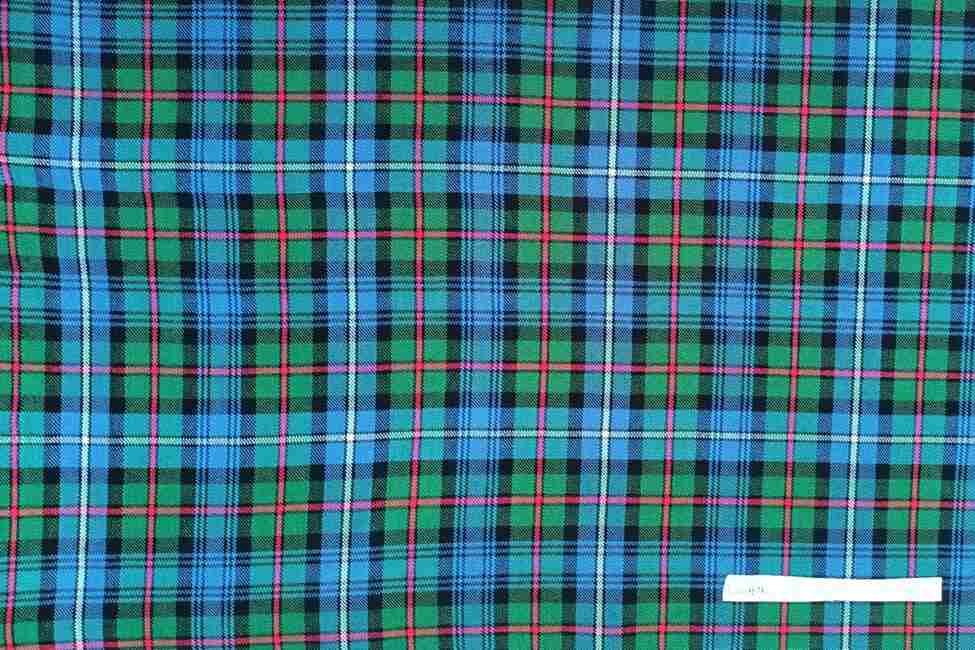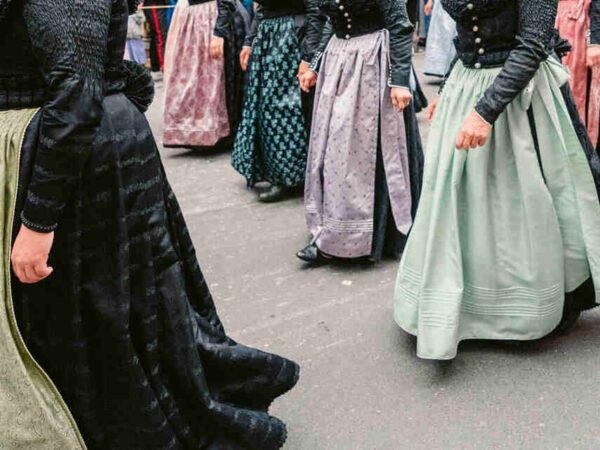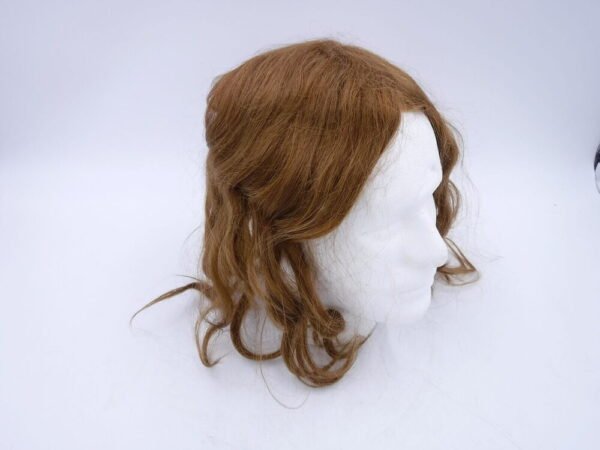The Hunter Tartan, with its distinctive green, blue, and black pattern, is more than just a fabric—it’s a powerful emblem of Scottish identity and heritage. Rooted deeply in the history of the Hunter Clan, this tartan has woven its way through centuries of tradition, culture, and rebellion. From its early beginnings in the Scottish Highlands to its present-day presence in global fashion and cultural events, the Hunter Tartan symbolizes a rich tapestry of loyalty, resilience, and connection to the land. But what exactly makes this tartan so historically significant? Let’s unravel the threads of its past to understand its enduring legacy in Scottish heritage.
History of Tartan in Scotland
Early Beginnings
Tartan’s roots can be traced to the ancient Celts, who wove patterned cloths for various uses. These early tartans were simple in design but laid the foundation for a complex cultural symbol. In those days, tartan was made using wool and natural dyes from plants, mosses, and lichens, which produced the earthy tones that characterized these early designs. The use of tartan was not exclusive to Scotland; other Celtic cultures, such as the Irish and the Welsh, also had their versions of tartan-like patterns.
As time went on, the significance of tartan began to grow. It became more than just a piece of cloth; it was a way to display one’s identity and status. The patterns, known as “setts,” became more intricate, and the colors more varied as trade routes opened and new dyes became available. This period marked the beginning of tartan as we know it today, a symbol deeply embedded in Scotland’s cultural and social fabric.
Evolution Over Centuries
As centuries passed, tartans evolved significantly. By the 16th century, specific patterns were associated with particular regions or families. These designs became a way to identify clans and their members, fostering a sense of unity and belonging. During this period, tartan became more regulated, with distinct patterns, or “setts,” developed for different clans. The clan system in Scotland was a hierarchical social structure, and tartan played a crucial role in this system by signifying allegiance and kinship.
The 18th century saw the development of more elaborate and colorful tartans, reflecting the increasing availability of different dyes and the influence of European fashion trends. This era also began tartan’s association with specific military regiments. The Highland regiments of the British Army adopted tartan uniforms, which helped spread the use of tartan beyond Scotland.
Tartan During the Jacobite Risings
The 18th-century Jacobite Risings marked a crucial period for tartan. Wearing tartan became an act of defiance against British rule, symbolizing loyalty to the Jacobite cause. This era saw a surge in tartan’s importance as a nationalistic symbol. The Jacobite Risings were a series of rebellions to restore the Stuart dynasty to the British throne. The tartan, particularly the Highland dress, became a symbol of the Jacobite movement, representing the fight for Scottish independence and heritage.
After the defeat of the Jacobites at the Battle of Culloden in 1746, the British government sought to suppress Highland culture, including the wearing of tartan. The Dress Act of 1746 made it illegal to wear tartan, and violators faced severe punishment. This ban lasted for 36 years until it was repealed in 1782. Despite this repression, tartan survived as a powerful symbol of Scottish identity and resistance. Its revival in the late 18th and early 19th centuries was spurred by romanticized notions of Highland culture, further cementing its place in Scottish heritage.
Meaning Behind the Colors
The Hunter Tartan typically features a mix of green, blue, and black. Green symbolizes the forests where the Hunters plied their trade, blue represents loyalty and steadfastness, and black signifies the rich soil of their homeland. These colors are not chosen arbitrarily; each has a specific meaning that reflects the clan’s history and values. Green is the dominant color in the Hunter Tartan, representing the clan’s connection to nature and their role as royal hunters and foresters. Blue symbolizes loyalty, reflecting the Hunter Clan’s unwavering support for the Scottish crown. Black represents the fertile soil of Ayrshire, the region where the Hunters made their home.
First Appearance in Historical Records
The Hunter Tartan first appeared in historical records in the early 19th century. It was officially recorded by the Scottish Tartans Society, ensuring its place in the annals of tartan history. The Scottish Tartans Society, established in 1963, is dedicated to preserving and promoting Scotland’s tartan heritage. Their records provide valuable information about the origins and significance of different tartans, including the Hunter Tartan. The formal recognition of the Hunter Tartan marked a significant milestone in the clan’s history. It provided a tangible symbol of their heritage, one that could be worn with pride by clan members and descendants. The tartan’s inclusion in official records also helped to preserve its unique design and ensure its continuity for future generations.
Symbolism and Meaning
What the Hunter Tartan Represents
The Hunter Tartan is more than just a pattern; it represents the clan’s identity, values, and history. Each color and stripe tells a story of courage, loyalty, and connection to the land. The tartan serves as a visual representation of the Hunter Clan’s legacy, encapsulating their achievements, struggles, and enduring spirit. The green stripes in the tartan symbolize the clan’s connection to nature and their role as royal hunters and foresters. The blue stripes represent loyalty, reflecting the Hunter Clan’s steadfast support for the Scottish crown.
The black stripes signify the rich soil of Ayrshire, the region where the Hunters made their home. The design of the Hunter Tartan reflects the clan’s roots in hunting and forestry, their unwavering loyalty to Scotland, and their resilience through centuries of change and conflict. The tartan’s intricate pattern is a testament to the clan’s craftsmanship and attention to detail. The green, blue, and black stripes are carefully arranged to create a harmonious, aesthetically pleasing, and significant design.
The tartan’s design visually represents the Hunter Clan’s identity, encapsulating their values, history, and achievements. The Hunter Tartan is a symbol of the clan’s pride and heritage. It is worn with pride by clan members and descendants, serving as a tangible connection to their ancestors and the rich history of Scotland.
Cultural Impact of the Hunter Tartan
Usage in Modern Times
Today, clan members and descendants worldwide wear the Hunter Tartan with pride. It appears in various forms, from kilts and scarves to more modern fashion adaptations. The tartan’s timeless appeal has made it a popular choice for traditional and contemporary clothing. In addition to clothing, the Hunter Tartan is also used in various accessories, such as ties, hats, and bags. These items allow individuals to incorporate the tartan into their everyday wardrobe, showcasing their heritage subtly yet meaningfully.
Role in Clan Gatherings and Events
The tartan is central in clan gatherings, weddings, and other significant events. It is a powerful visual link to the clan’s storied past and a symbol of unity and pride. At these events, clan members often wear kilts and other garments made from the Hunter Tartan, creating a sense of camaraderie and belonging. Clan gatherings allow members to reconnect with their heritage and celebrate their shared history. The Hunter Tartan is a crucial element of these celebrations, reminding them of the clan’s achievements and the values they hold dear.
Presence in Scottish Festivals
Scottish festivals and Highland games frequently showcase the Hunter Tartan. These events celebrate Scotland’s rich cultural heritage, with tartans starring in parades and competitions. The Hunter Tartan is often seen in the form of kilts, sashes, and banners, proudly displayed by participants and spectators alike. These festivals allow the Hunter Clan to showcase their heritage and connect with other clans and communities. The presence of the Hunter Tartan at these events is a testament to its enduring significance and the pride that clan members take in their history.
Hunter Tartan in Literature and Media
Depictions in Books and Movies
The Hunter Tartan has entered literature and media, often depicted as a symbol of Scottish heritage. It’s been featured in historical novels, movies, and TV shows, contributing to its cultural significance. These portrayals help to preserve the tartan’s legacy and introduce it to new audiences. The Hunter Tartan is often used in literature to represent characters strongly connected to Scottish history and culture. In movies and TV shows, the tartan authentically represents Scottish life, adding depth and realism to the story.
Preservation of the Hunter Tartan
Efforts to Maintain Tradition
Preserving the Hunter Tartan involves meticulous efforts by tartan weavers and historians. These dedicated individuals ensure that the traditional patterns and colors are accurately reproduced. The process of creating a tartan is a complex and detailed one, requiring skill and precision to achieve the desired result. Weavers use traditional techniques and high-quality materials to create authentic Hunter Tartan fabric. Historians play a crucial role in documenting the tartan’s history and significance, ensuring that future generations understand its importance.
Role of Tartan Weavers and Historians
Tartan weavers play a crucial role in maintaining the integrity of the Hunter Tartan. They use traditional weaving techniques to create beautiful and durable fabric. These skilled artisans take great pride in their work, ensuring that each piece of tartan truly represents the Hunter Clan’s heritage. Historians, meanwhile, document the tartan’s history and significance. They research the origins of the tartan, its evolution over time, and role in Scottish culture. This information is invaluable for preserving the tartan’s legacy and educating others about its importance.
Modern Adaptations and Fashion
While preserving tradition, the Hunter Tartan has also adapted to modern fashion trends. From haute couture to everyday wear, its timeless appeal inspires designers and fashion enthusiasts. The tartan’s distinctive pattern and rich colors make it versatile for various clothing and accessories. Modern adaptations of the Hunter Tartan can be seen in everything from tailored suits and dresses to casual wear and sportswear. These contemporary interpretations keep the tartan relevant and ensure it remains a vibrant part of Scotland’s cultural heritage.

The Role of Kilts in Scottish Culture
Kilts, the iconic garment of Scotland, hold a significant place in Scottish culture and heritage. Traditionally made from tartan fabric, kilts are knee-length skirts with pleats at the back, typically worn by men. They symbolize pride, identity, and a deep connection to Scottish ancestry. Each kilt, especially when made from clan-specific tartans like the Hunter Tartan, tells a story of family heritage and regional history. Kilts are worn during formal events, clan gatherings, and cultural festivals, serving as a vibrant display of Scotland’s rich traditions. Over time, kilts have evolved, finding their way into contemporary fashion while retaining their historical significance and cultural essence.
Hunter Tartan in the Diaspora
The Hunter Clan, like many Scottish families, has a global diaspora. Clan members and their descendants have spread worldwide, taking their heritage and traditions. This worldwide network of Hunters maintains a solid connection to their Scottish roots, often through tartan. Among these global communities, the Hunter Tartan is a cherished link to their Scottish roots. It’s worn at cultural events, family gatherings, and as a proud display of their heritage. The tartan provides a tangible connection to their ancestors and the rich history of Scotland.
In countries such as the United States, Canada, Australia, and New Zealand, descendants of the Hunter Clan proudly wear the tartan at Scottish festivals, Highland games, and other cultural events. This widespread use of the tartan helps to keep the clan’s heritage alive and strengthens the bond between the global Hunter community.
The Tartan as a Symbol of Heritage
For the Hunter diaspora, the tartan is more than a piece of cloth—it’s a tangible connection to their ancestors and the rich history of Scotland. Wearing the Hunter Tartan is a way to honor their heritage and maintain a connection to their roots, no matter where they live. The tartan symbolizes identity and pride, allowing descendants of the Hunter Clan to celebrate their Scottish heritage and pass it on to future generations. This enduring connection ensures that the legacy of the Hunter Tartan will continue to thrive for years to come.
Conclusion
The Hunter Tartan is a vibrant thread in the tapestry of Scottish heritage. Its history, symbolism, and cultural impact make it a significant emblem of the Hunter Clan’s identity and Scotland’s rich traditions. As a living tradition, it continues to evolve yet remains a steadfast symbol of loyalty, resilience, and pride.
Do Read: Long the Sleeve Homecoming Dresses: Look Stunning on a Budget
FAQs
What distinguishes the Hunter Tartan from other tartans?
The Hunter Tartan’s unique color scheme and design elements, representing the clan’s history and values, set it apart from other tartans. Its distinctive green, blue, and black stripes reflect the clan’s connection to nature, loyalty to the Scottish crown, and the fertile soil of their homeland.
How can one authenticate a Hunter Tartan?
Authenticating a Hunter Tartan involves verifying its pattern and colors against official records maintained by organizations like the Scottish Tartans Authority. These records provide detailed information about the tartan’s design, ensuring that authentic tartan fabric meets the traditional standards.
Are there different variations of the Hunter Tartan?
Yes, there are several variations, including ancient, modern, and dress versions, each with slight differences in color and design. These variations allow for interpretations of the traditional pattern, catering to personal preferences and contemporary fashion trends.
How is the Hunter Tartan used in modern fashion?
The Hunter Tartan appears in various forms, from traditional kilts to contemporary fashion items like scarves, ties, and even bespoke suits. Its timeless appeal and distinctive pattern make it a popular formal and casual wear choice.
Where can I purchase authentic Hunter Tartan items?
Authentic Hunter Tartan items can be purchased from reputable tartan weavers and retailers in Scotland and online. These sources ensure adherence to traditional patterns and quality and offer a wide range of tartan products, from clothing and accessories to home decor items.













